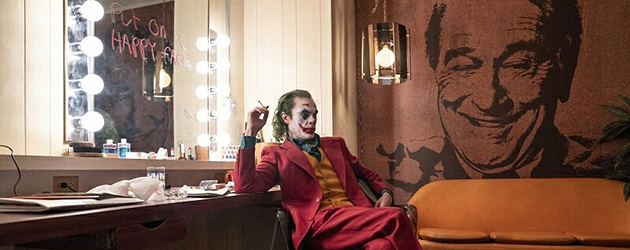Mark Friedberg

AS: Everyone talks about how Wes is so specific about details, like the colors of props for example.
MF: Todd’s a little bit like that. Todd was pretty involved. I’m a communicator. I want to be on the same page with the director. I’m going to work four months on a set that he’s going to see the first time the day he shoots it, a lot of times. I want to make sure he knows what he’s getting. If he gets there and it’s not what he thought he was getting, those are very unpleasant mornings.
AS: Are you constantly sending him pictures?
MF: Always sending him pictures. Starting with locations, then with drawings of locations, then the concept art, then photos of the set dressing, then with the palette, then as it’s being built. And Todd, while directing a movie, responded to every email within a minute. The way the movie looked mattered to him. Not just because that’s his instinct as a director but because the way the movie looked and the way Arthur acted are the same thing. One is a manifestation of the other.
AS: Would you say that the city was a reflection of Arthur’s character?
MF: I don’t know about a reflection. Maybe an extension. Or an influence. Is Arthur the way he is because of the city or is the city the way it is because of Arthur? It’s arguable that none of it ever happened. That the whole thing is in Arthur’s mind. That he’s in a cell somewhere and this is something he dreamed up. Either way in this story the city is Arthur. It even erupts like he does at the end.
What’s real, what’s not, what’s funny, what’s tragedy, what’s awful, what’s beautiful? People keep telling me, Mark, your work is so beautiful in this movie. All I can think about is the ten trucks of garbage I had everyday. And looking for the worst of the worst of what’s left in the city, so beautiful.
AS: After scouting and research do you end up with a giant wall of pictures?
MF: We always have a wall. It helps our department to see all the research and how we want it to go together. It helps other departments all get on the same page. I particularly like that it allows us to see it all together in one look. But it’s not the only way the research and concepts are used.
This is the way I work: that document I make when I first read the script evolves and evolves and evolves. It starts with scans or photos that I have of things that are in my computer- a painting, a poem, whatever it is that inspired me. I translate the script into my visual language. Then let’s say I get hired. I start to work on the story with specific references. It could look like this and this could be his room. It could be this tone and this could be the kind of photography and this could be the palette for each scene. I map out in a visually poetic way what it could look like. And we go to work. And we start to pick locations. I put my references and the locations into the document. Then if you shuffle those two piles of cards you’ll start to get the sense of what the sets in those locations might look like. Then we draw our concepts right onto the location pictures that we liked. We keep refining that document. The location pictures become drawings, become concepts of the sets. The set dressing gets picked and approved and that gets into that document. The costumes start getting designed and approved. Then the DP gets hired and starts taking pictures, showing how they might see the sets and that gets into my document. My document becomes a synthesized previs of how the visual components of the film would go together to rewrite the story. A version of the harmony we are striving for. What I started with, my first impression in that document, is now a pretty detailed book version of what the movie can be, wants to be.